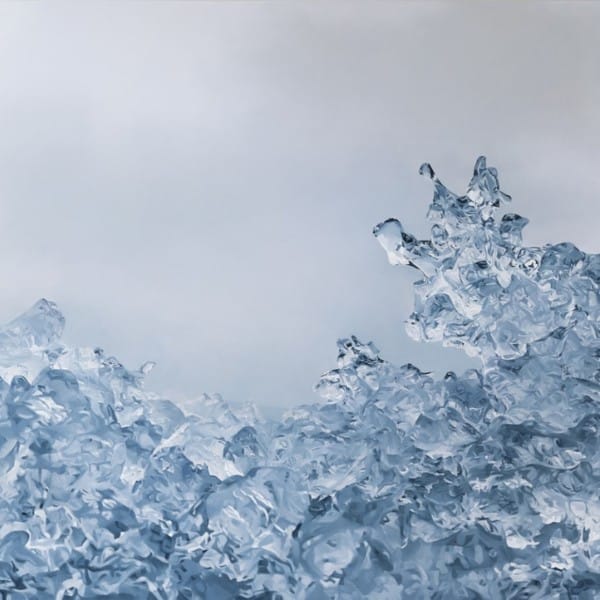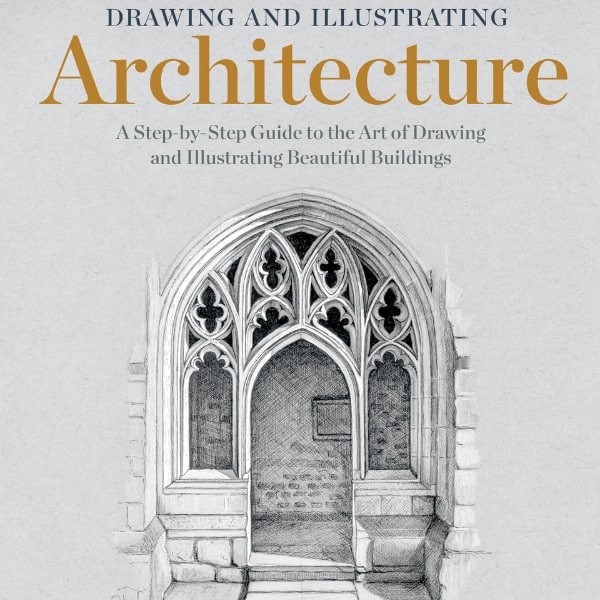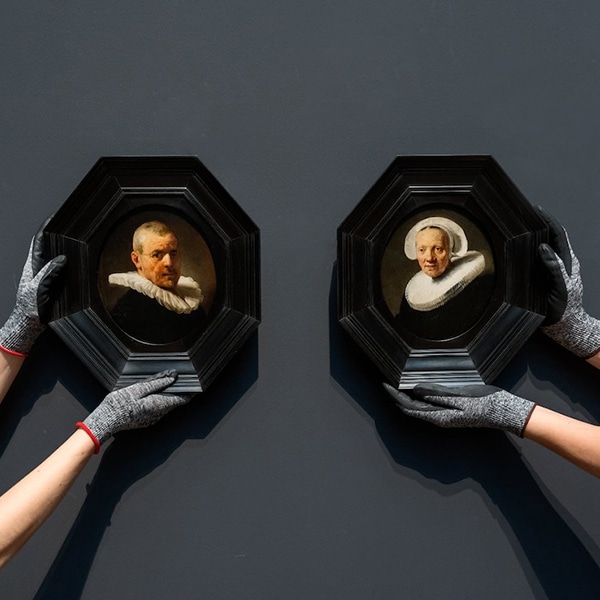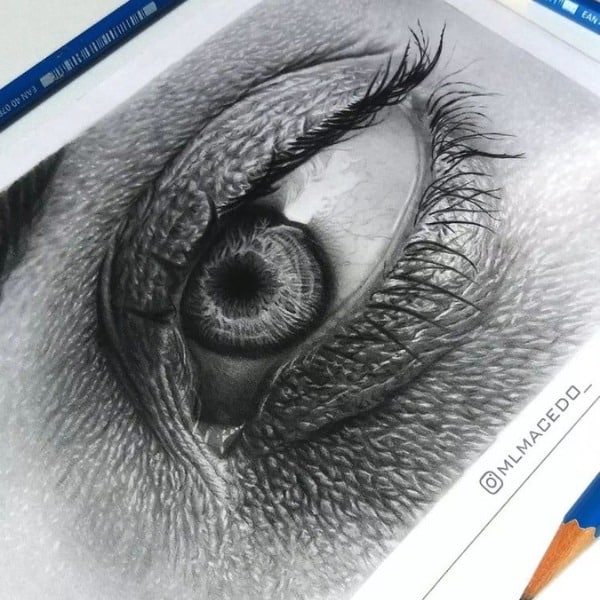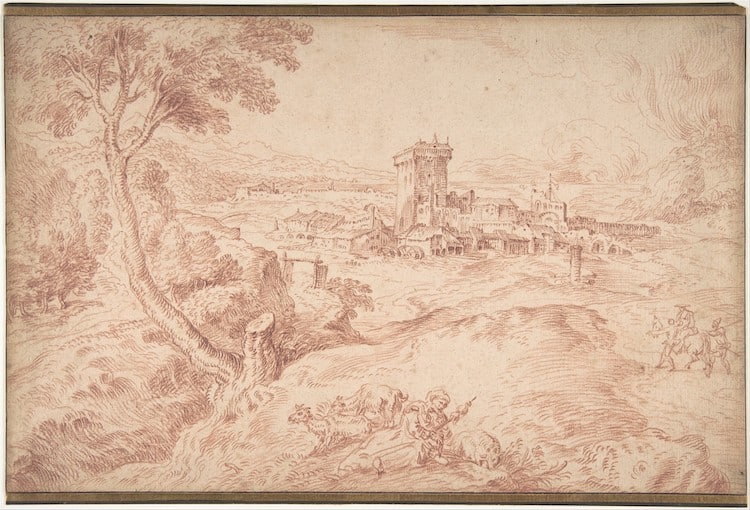
Jean-Antoine Watteau, “Landscape with an Old Woman Holding a Spindle,” c. 1715 (Photo: Wikimedia Commons, Public domain)
For most people, drawing is the first form of art they will explore. Requiring only a pencil or pen and some paper, it is easy to pick up and practice, yet hard to master. So, it should come as no surprise that drawing has been a foundational part of an artist's curriculum for centuries, oftentimes used as a problem-solving medium to explore ideas, styles, and techniques.
However, drawing has roots well before the Renaissance. Some of the earliest examples of human creativity are renderings made inside Paleolithic caves over 30,000 years ago depicting animals as well as figures. Since then, drawing evolved with civilization, utilizing different mediums and achieving more realistic representations. When we look at some of the best drawings today, they cover a breadth of styles showcasing the versatility of this age-old art form.
Scroll down to learn more about drawing.
What is drawing?
Drawing is a form of art that involves marking a two-dimensional material like paper with marks, lines, and areas of tone. While drawings can be made with paint and wet media, it is more commonly created with dry media like pencils, pastel, and charcoal.
As one of the most fundamental creative disciplines, drawing is frequently associated with observation and problem-solving. As a result, it is often used to prepare for other forms of art like painting and sculpture, as well as to create a final work of art.
Types of Drawing
There are many different types of drawing, stemming from the subject that the artist is interested in and the idea they are trying to convey.
Figure Drawing
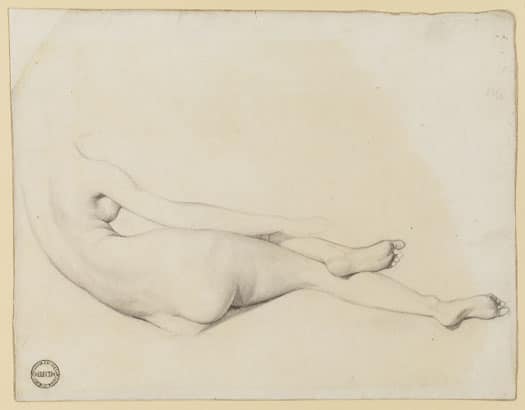
Jean-Auguste-Dominique Ingres, “Study for La Grande Odalisque,” 1814 (Photo: Wikimedia Commons, Public domain)
Figure drawing involves capturing the human body in a variety of poses and styles. This can be used to practice rendering human anatomy or as a way of creating a finalized depiction of the body.
Landscape Drawing
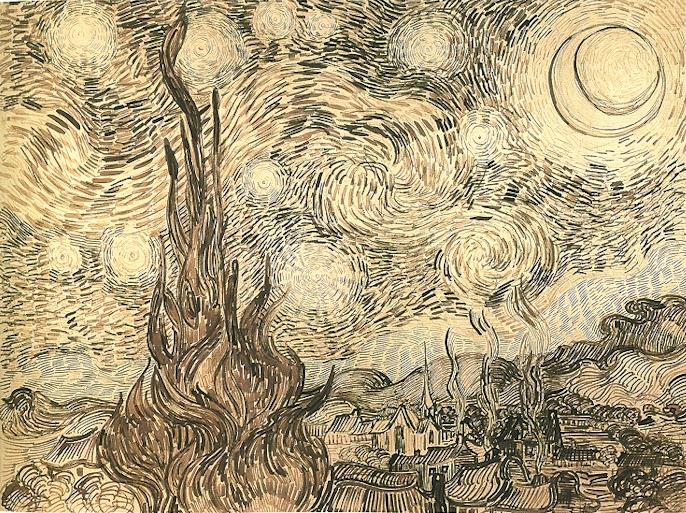
Vincent van Gogh, Drawing of “The Starry Night,” June 1889 (Photo: Wikimedia Commons, Public domain)
Like landscape paintings, drawings inspired by this subject portray environments, natural surroundings, or cityscapes with sketching utensils and paper. This practice often requires the artist to sketch from observation and can involve an array of techniques and styles.
Line Drawing
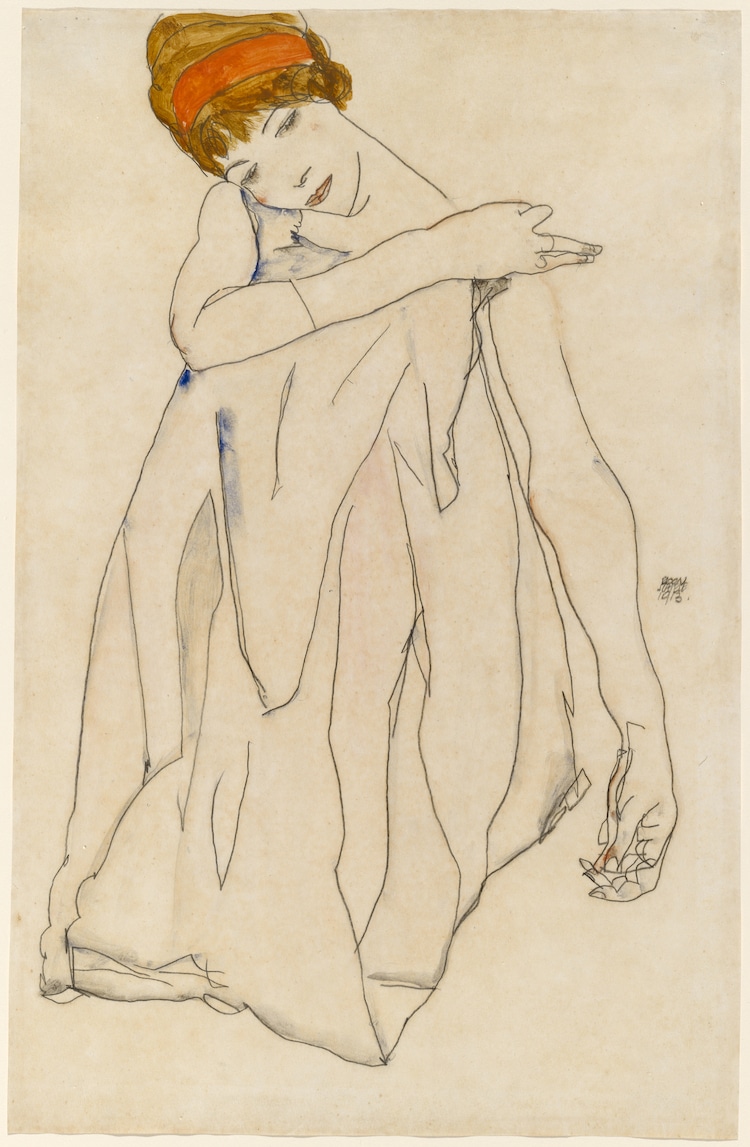
Egon Schiele, “Dancer,” 1913 (Photo: Wikimedia Commons, CC0 1.0 Public Domain Dedication)
Line drawing or line art utilizes the power of line to render a subject. Elements like shading and color gradients are absent, allowing the focus to rest firmly on the lines themselves. These drawings can be sketches, but they can also be finished artworks unto themselves. The line is so fundamental to the arts, that a common exercise for art students is to draw a form using one single line, never letting the drawing utensil leave the page.
Cartooning
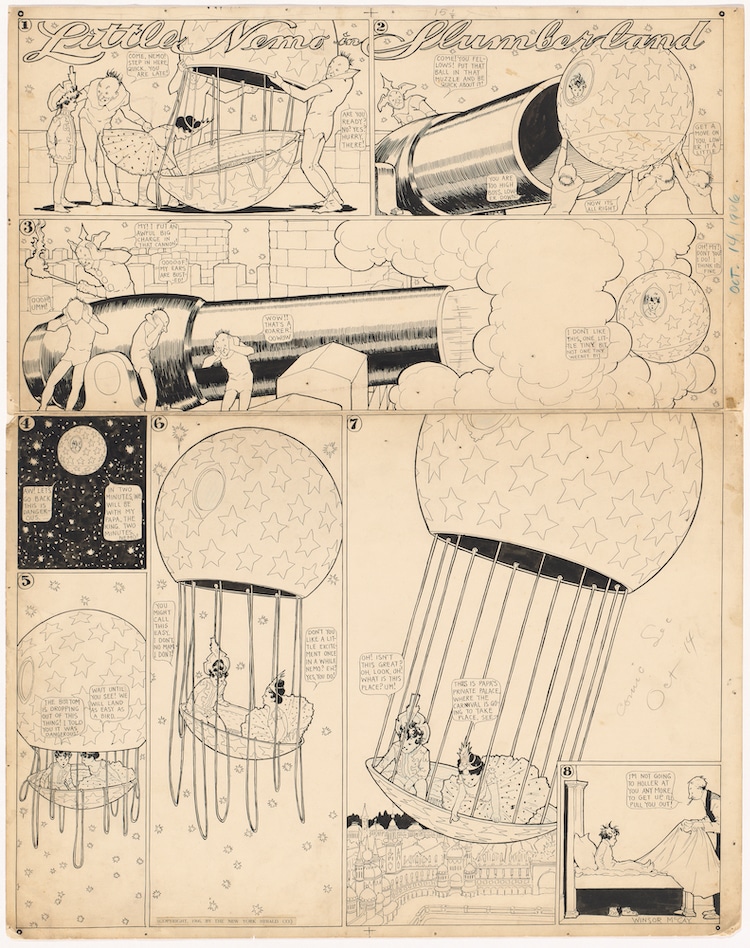
Winsor McCay, “Little Nemo in Slumberland: ‘I don’t like this, one little tiny bit, not one tiny weenie bit’,” 1906 (Photo: Wikimedia Commons, CC0 1.0 Public Domain Dedication)
Cartooning is one of the more modern forms of drawing, emerging in the mid-1800s. Unlike other forms of drawing—which are usually intended to capture subjects for observation—cartooning has different intents, like humor and story-telling. In addition, cartoon drawings tend to be stylized in some way to convey these ideas.
Drawing Techniques
Hatching
A basic technique, hatching involves making tiny, parallel ticks on paper. In this way, placing hatches close together can be used to create shading, and further apart will instead add texture to certain areas.
Cross-Hatching
The cross-hatching technique is the logical extension of hatching. However, instead of creating a series of parallel lines, these marks will intersect one another in a cross-like formation. This will, in turn, add more depth and darkness to the areas where it is placed.
Stippling
Stippling involves making numerous dots on the subject or page. Just like hatching, the closer the dots are placed to one another, the darker the shading will appear.
5 Artists Famous for Their Drawings
Leonardo da Vinci (1452 – 1519)
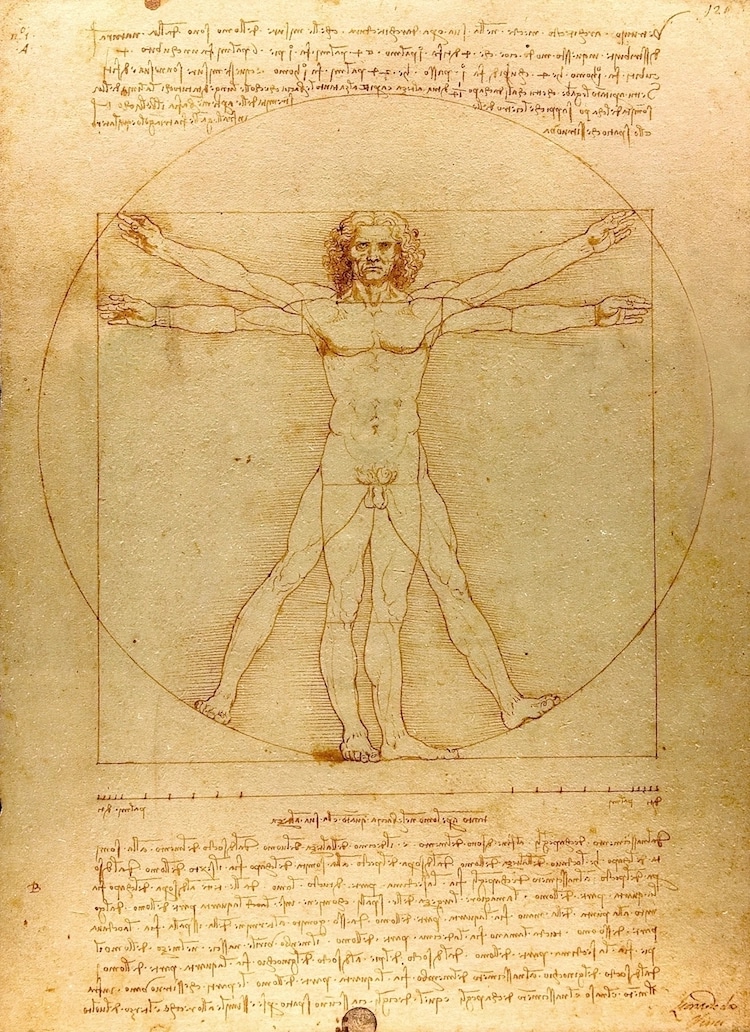
Leonardo da Vinci, “Vitruvian Man,” c. 1492 (Photo: Luc Viatour via Wikimedia Commons, Public Domain)
Leonardo da Vinci is the quintessential Renaissance man whose unending curiosity inspired him to study art, engineering, and nature. And all of his interests can be found in his legacy of notebooks.
In these notebooks are hundreds of detailed sketches exploring human anatomy, animals, plant life, inventions, and more. They show how Da Vinci used drawings to think critically as well as solve problems.
Albrecht Durer (1471-1528)
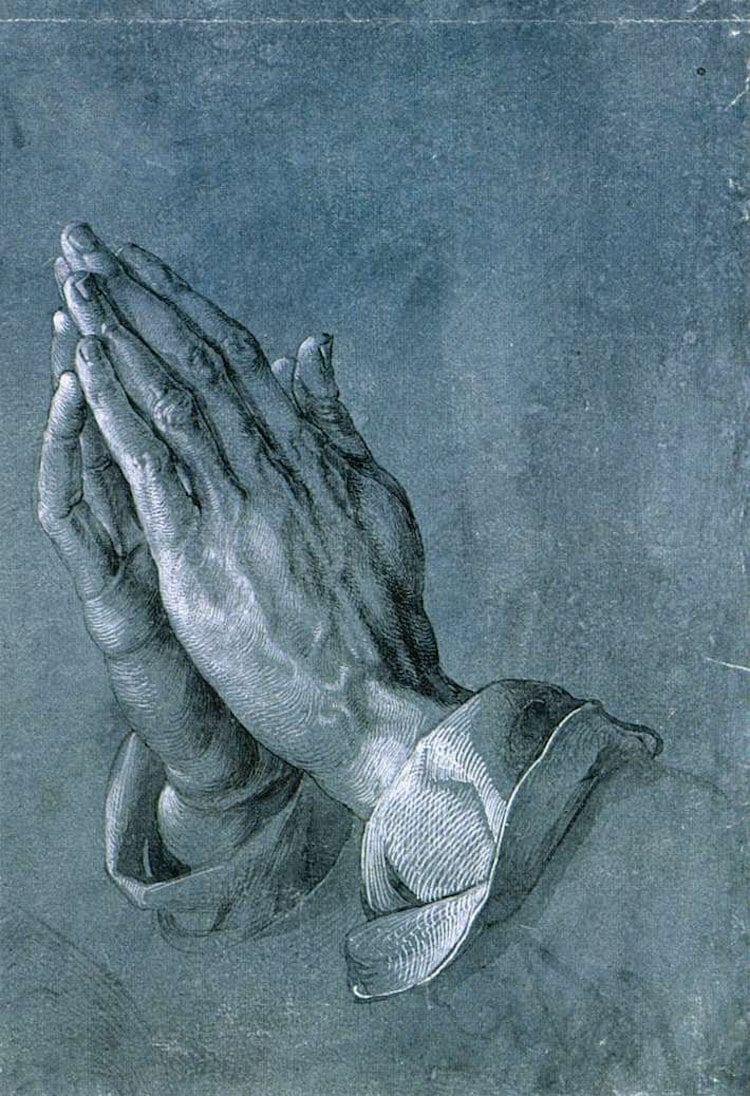
“Praying hands,” pen and ink drawing, 1508 (Photo via Wikimedia Commons, Public Domain Dedication)
Northern Renaissance artist Albrecht Durer was the first artist to elevate printmaking to a form of fine art. He produced engravings, woodcuts, and etchings based on his meticulously detailed drawings. It was the first time someone attempted to duplicate such realistic illustrations, and its overwhelming success subsequently inspired other artists to make and distribute prints.
Rembrandt (1606 – 1669)
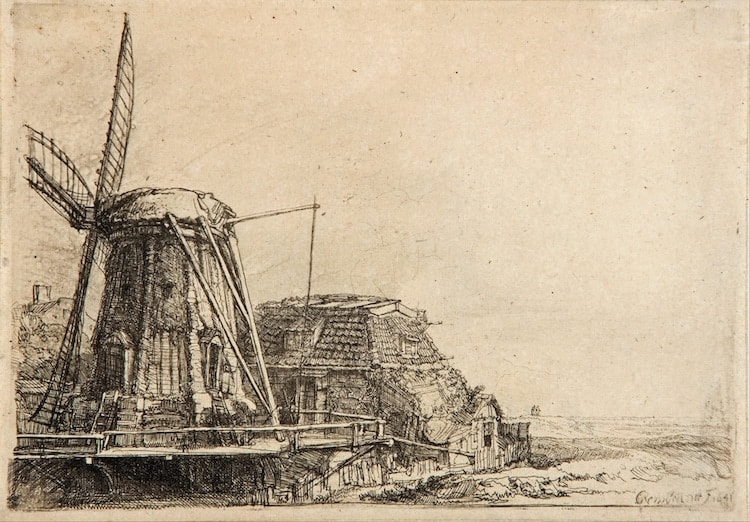
Rembrandt, “The Windmill,” 1641 (Photo: Art Gallery of South Australia via Wikimedia Commons, Public Domain)
Celebrated for his successes spanning multiple media and types of subject matter, Rembrandt was called a “colossus of art” by prolific sculptor Auguste Rodin. In his drawing, he was known for his ability to render both landscapes and subjects quickly and confidently.
British artist David Hockney praised Rembrandt's gestural drawing A child being taught to walk, saying: “I think it's the greatest drawing ever done… It's magnificent drawing, magnificent.”
Edgar Degas (1834 – 1917)

Edgar Degas, “Two Studies of a Singer,” c. 1870-1900s (Photo: Public Domain via Wikimedia Commons)
While most Impressionists found inspiration in picturesque landscapes, French artist Edgar Degas preferred capturing human subjects, especially those in movement. In addition to his many well-known paintings, he also made countless pastel and pencil studies of ballerinas, singers, and bathing women—each of which displays his finesse at rendering the human form in action.
Pablo Picasso (1881 – 1973)
View this post on Instagram
With a career that spanned 79 years, Pablo Picasso is known for changing his painting style several times. Throughout his many creative shifts, however, the artist retained a uniquely decisive way of capturing the world around him in drawings. In particular, these sketches show how the Spanish artist needed only a few bold lines to evoke the form of his subjects.
View this post on Instagram
Frequently Asked Questions
What is drawing?
Drawing is a form of art that involves marking a two-dimensional material like paper with marks, lines, and areas of tone.
Why is drawing important?
As one of the most fundamental creative disciplines, drawing is often associated with observation and problem-solving. As a result, it is often used to prepare for other forms of art like painting and sculpture, as well as to create a final work of art.
Related Articles:
Best of 2022: Top 10 Drawings and Illustrations Featured on My Modern Met
10 Artists Who Were Masters of Drawing, From Leonardo da Vinci to Pablo Picasso















































































